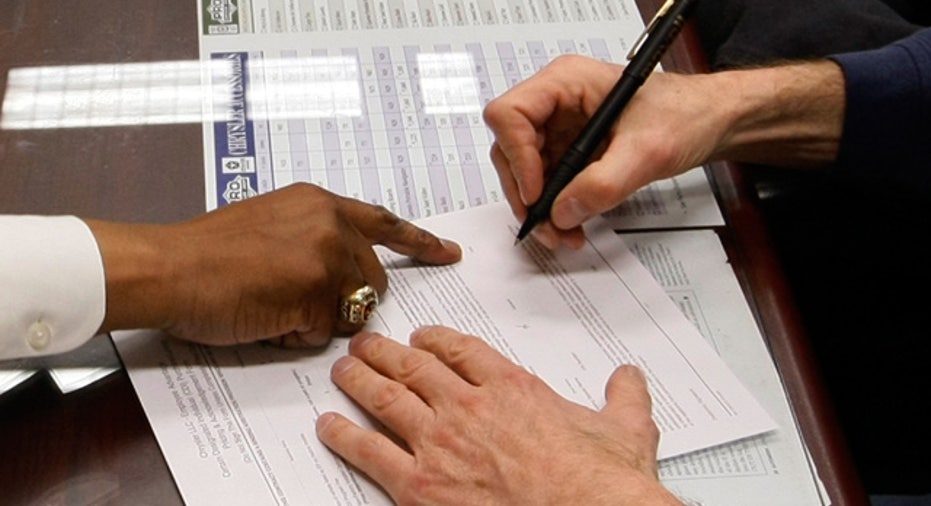How to Improve Your Chances of Getting an SBA Loan

Dear Your Business Credit,
I'd like to apply for an SBA loan later in the year for my web design business. What can I do to increase my chances of getting one?
- John
Dear John,
You're smart to prepare early. A banker will look at many factors when evaluating whether to grant you a loan, from your personal credit to the recent profitability of your business, so you'll want to make sure you put your best foot forward on every front. Even small efforts, like paying down some of your credit card debts to reduce your overall credit utilization, can make a difference.
Fortunately, your timing is pretty good. Even though the higher loan guarantees offered by the U.S. Small Business Administration during the recession have expired, there's been an uptick in lending through its programs recently. The number of loans approved in the popular 7(a) and ARC programs is up 4% in the year-to-date period ending May 1, 2013 compared to the same period in 2012. While that's not a whopping increase, it does show that the needle is moving in the right direction. And the dollar amount is up 20% over last year's figure.
Before you start working on your application, consider which SBA loan program is right for you. Currently, the U.S. Small Business Administration guarantees loans up to $5 million in the 7(a) program, which can be used for working capital. The average loan amount in fiscal 2012 was $337,730.
The SBA says that most lenders don't want to make loans under $50,000. If you need a smaller amount of money, it's worth checking out the relatively new SBA Small Loan Advantage Program, which began taking applications in 2011. The maximum loan size is $350,000, and the application process has been streamlined. Also ask your banker about loan programs that don't have the SBA guarantee. SBA lending makes up only a very small portion of total small-business lending, and your bank may have other options worth considering.
To prepare an application for a traditional SBA-guaranteed loan, you will need to do a fair amount of paperwork (the SBA has a checklist of the documents you'll need). Unless you urgently need a loan, I'd recommend giving yourself a few months to pull them all together, so they don't become a big distraction.
In addition to forms such as the application, personal history and personal financial statement, you must supply the lender with business statements, such as a profit-and-loss statement and one year's worth of projected financials, such as your expected revenue (along with a written statement explaining how you'll meet your numbers). Some accounting software, like QuickBooks and FreshBooks, can help you create these statements more easily.
You'll fare better in the application process if you work on improving your personal credit score ahead of time. For instance, you might try paying down some of your personal debts, so the bank won't view you as overextended. Even though you run a business, the bank will factor in your personal financial situation when determining whether you will be able to pay back the loan, which you will need to personally guarantee.
Also work on improving the balance sheet at your business. Are there ways you can boost sales or lower overhead to make it more profitable? Since the loan officer will want to see historical data, not just last month's, it may be worthwhile to put off your loan application for up to a year if it will give you an opportunity to get your business in shape.
Applying for an SBA-backed loan may sound like a lot of work. It is -- which has been a perennial source of frustration for small-business owners. But the pay-off is lower interest rates.
For an SBA-backed loan, the lender can't charge more than the prime rate (as published in the Wall Street Journal), plus 2.25% for a loan due in less than seven years. The prime rate is currently 3.25%. This would bring your interest rate to a maximum of 5.5%. For loans due in more than seven years, the maximum interest rate is prime plus 2.75%, which would bring it to 6%.
The SBA allows lenders to pass along certain fees to borrowers. You may, for instance, be charged an SBA guaranty fee based on the size of the SBA guarantee and the amount you have borrowed. For example, if you took out a $150,000 loan, the SBA would typically guarantee 85%. The guaranty fee is 2% of the $127,500 guaranteed, or $2,550.
While many business owners use credit card financing, it can be costly for longer-term purchases. The average annual interest rate on business credit cards is 12.98%, according to the Creditcards.com weekly card rate report.
If you get turned down for a small-business loan, you may not have many alternatives to credit card financing. In such cases, treat your borrowing as an opportunity to build a strong credit history. Pay more than the minimum balance each month, and pay it on time. That way, if you need to try submitting a bank loan application again next year, you'll be on stronger footing.
See related: Is there any such thing as good debt for a small business?, Creative financing for small businesses, Used wisely, small-business cards can keep business afloat



















